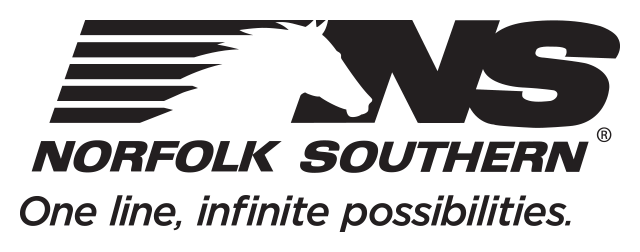Norfolk Southern and the Industry Enhance Emergency Response Preparedness
Norfolk Southern BizNS: Watch out for Rattlesnakes!
To say that the rail industry’s premier training center is in the middle of nowhere is an understatement: Driving east from Pueblo, Colo., it’s 25 miles across desolate flatlands, past the U.S. Army Pueblo Chemical Depot, where mustard gas is stored; past prairie dogs and pronghorn antelope; and past a security checkpoint with a huge warning sign for rattlesnakes.
Since last summer, Norfolk Southern and other Class I railroads have converged on the remote Security and Emergency Response Training Center to help train community emergency responders on how to safely respond to the derailment of a train moving crude oil tankers. The railroad-sponsored training was prompted by a dramatic increase of crude-by-rail transport and several highly publicized derailments – including the July 2013 explosion of a runaway crude train in Lac-Mégantic, Quebec, that killed 47 people and destroyed much of the downtown area.
As part of an industry initiative to address concerns, the Class I roads, including NS, committed $5 million to develop a three-day, 24-hour training course on crude-by-rail emergency response at the SERTC facility. The Transportation Technology Center Inc., a subsidiary of the Association of American Railroads, operates the center. The Class I roads are paying for 1,500 first responders to attend the class.
“There have been numerous initiatives over the past two years to address the increased volumes of crude oil traveling on the nation’s railways, including regulatory rulemakings, emergency orders, and voluntary programs,” said Rich Russell, NS system director environmental protection. “The SERTC crude-by-rail training course was part of a voluntary commitment to the U.S. Department of Transportation. It provides a unique hands-on learning environment for emergency responders, and it plays an important part in the rail industry’s larger local community preparedness programs.”
NS’ hazardous materials and environmental operations groups enhance preparedness by developing and offering training programs for NS employees and local emergency responders. Collectively, these NS groups trained more than 5,000 responders across the company’s service network in 2014. They also are on call to provide emergency response duty at any time.
At three of the SERTC training courses last year, NS sponsored 126 first responders from 11 states, primarily along the company’s crude oil corridors, providing tuition, travel, and expenses. The participants included fire chiefs, paramedics, homeland security officials, hazardous materials officers, and others from Pennsylvania, Ohio, Delaware, Illinois, Indiana, New York, New Jersey, Virginia, Maryland, Alabama, and Kentucky. In 2015, NS plans to offer the three-day training class to 80 more emergency responders across its rail network in June.
NS attendees and facilitators of the training included David Schoendorfer, manager hazardous materials; Robert Wood, hazardous materials compliance officer, Atlanta; Chad Edwards, manager fire and life safety, Atlanta; Joe Taylor, hazardous materials compliance officer, Harrisburg, Pa.; Bob Scoble, environmental operations engineer, Bellevue, Ohio; and Bill Oertly, hazardous materials compliance officer, Roanoke, Va., who retired in September.
“We understand that the risks associated with transporting crude-by-rail are a very real concern for many communities,” Schoendorfer said. “Norfolk Southern takes its responsibility to safely ship crude oil, as mandated by federal law, very seriously.
We want to ensure that first responders along crude corridors have the very best training possible, so that in the rare event of an incident, they are prepared.”
Taylor and Scoble, who hired on with NS last year, said the training sessions provided a chance to network and build relationships with emergency responders on their territories. They noted that 30 percent of the participants came from Pennsylvania, while 25 percent were from Ohio communities.
“The training gives first responders an opportunity not only to become familiar with response protocol for dealing with rail cars containing crude oil, but also how to work safely in a railroad environment,” Wood said.
Classroom and hands-on training included chemical and physical properties of the different crude oil transported, basic site and damage assessment, tank car design and construction, planning for crude oil incidents, and working withn the railroad.
A derailed train consisting of 20 tank cars stays in place on the SERTC property for training that simulates real-life rail scenarios. The setting is equipped with underground pumps that, with the touch of a button, ignite a fire, shoot water from a car to simulate a spilled product, or release steam to simulate escaping vapors. Participants also practice using specialized response techniques, including firefighting foam agents and spill control procedures.
Located on a 52-square-mile fenced site, the center’s isolation makes it an ideal spot for simulating explosions, fires, and train derailments.
“This is top-notch,” said Jason Hudgens, a firefighter and paramedic from Akron, Ohio, who attended one of NS’ summer sessions that included a fire to simulate a tanker car derailment. “We could feel the heat and use the hoses to spray foam. You can’t do that in a classroom. You can’t do this anywhere else.”




